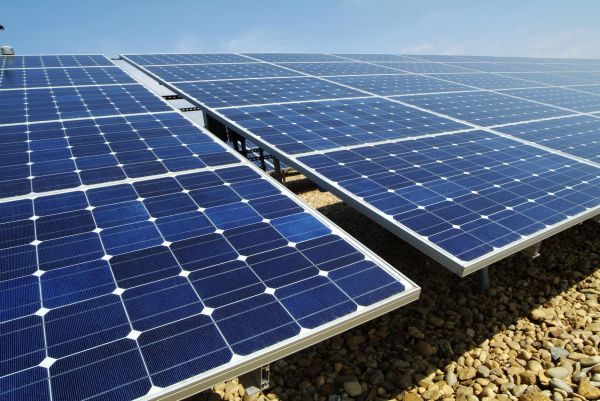Undoubtedly, there has been a shift in the general consciousness towards using the non-conventional sources of energy. Solar energy comes high on the list of such sources because it is available in infinite quantities. Research is on to make solar panels that are more efficient to save space, cost and to improve energy utilization. Here we present the five most efficient solar panels that are being developed.
1. GE’s (ad)venture into solar energy panels

A 400MW factory with 400 working people and $600m in investments are the resources being plowed by the global giant GE into efforts to manufacture the most efficient solar panel in the world. PrimeStar Solar is partnering with GE in the manufacture of the ultra thin, cadmium telluride (CD-Te) solar cell. GE has made claims that it has already procured orders of almost 60MW worth of solar panels for NextEra Energy and another 20MW worth of it for Invenergy. The new panels have been tested and found to have an aperture area efficiency of 12.8 percent. For Cd-Te films, this is a record-breaking efficiency and and GE naturally plans to make this panel, christened PV, as the major player in the company’s renewable energy strategy. Work is on to make the product more affordable for customers.
2. A big HIT among the solar panels

The photo-voltaic cells belonging to the Hit series of from SANYO group are touted to be the most efficient ones in the world with a 21.6 percent conversion rate. The best news is that this product is already out in the European markets. It needs a MCS accreditation before it can make an entry into the UK. Having received that, HIT is all ready to hit the markets in UK. This MCS accreditation is useful for the end users since they can now use the solar panels under the Feed In Tariff or FIT scheme which rewards the usage of renewable sources of energy all over Europe. These HIT modules, which will be made available by the end of 2011 are sure to make a great difference.
3. Non-conventional approach towards a non-conventional energy source

Instead of trying to develop and improve a solar panel to absorb more energy, the scientists and researchers at the California based, Lawrence Berkeley National Laboratory, have decided to create a solar cell that gives an increased output or more light! They have done this using the phenomenon of fluorescence. Fluorescent light is not visible under normal conditions tough it consists of photons. It was discovered that when the energy released from the solar left left as fluorescence, the voltage that was obtained was greater. The maximum efficiency that a solar cell could theoretically reach is 33.5 percent and this cell has been almost made to attain that magic figure – 28.4 percent to be precise. The magic is worked by a rare compound, gallium arsenide which finds the correct balance between the amount of light absorbed and the amount of light converted into electricity. This is a neat five percent increase over the most efficient solar cells being commercially sold today.
4. Silicon based solar cell sets new record in Australia

Unity is strength and this dictum is being magnified in the sphere of solar energy generation too. Using a combination of solar cells made from silicon, gallium, phosphorus, indium and arsenic, the scientists at the University of New South Wales have breached the 43 percent barrier in solar cell efficiency. The team had made the most efficient silicon solar cell with an output of 25 percent but they were not satisfied and did not rest on its laurels. The only hitch here is that these cells have only been laboratory tested. The other cells are too costly to be made commercially. All said and done, these cells have definitely brought in hope of efficiently harvesting the energy from the sun.
5. ‘Glow in the Dark’ Solar Cells which break the efficiency records

The scientists are the Berkeley University seem to be on a creating spree. Working over an improvement, they have now made their fluorescent solar panels get the ability to glow in the dark. The basic techniques and idea remains the same and it consists of utilizing better that captured solar energy. The panels fluoresce, giving off light in the dark. These panels have also been made cost effective by using a reusable template for the gallium arsenide. The greatest challenge remains in reducing cost further for gallium arsenide is almost 10,000 times costlier than silicon.




